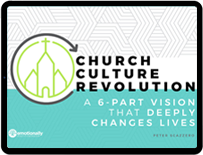10 Trends for 2013
Where we live impacts us. I have been the pastor of a multiracial, international church in New Life in Queens, NY for the more than twenty five and a half years. It is the soil out of which I see the world and the larger church. Thus, I offer the following trends, or concerns, that I believe we need to carry to God in prayer: Evangelicalism will continue to lose young people in their teens, 20’s and 30’s who are genuinely searching for an authentic transformative experience with God. The issue of same-sex marriage and partnerships will increasingly dominate our youth ministries. We will be very slow to equip our youth leaders and ministries with a well-thought, nuanced, theological response. There will continue to be little interest for Protestants, Roman Catholics, and Orthodox believers to learn from one another. Marriage discipleship will remain non-existent or superficial in our churches. The high divorce rate, along. Read more.





